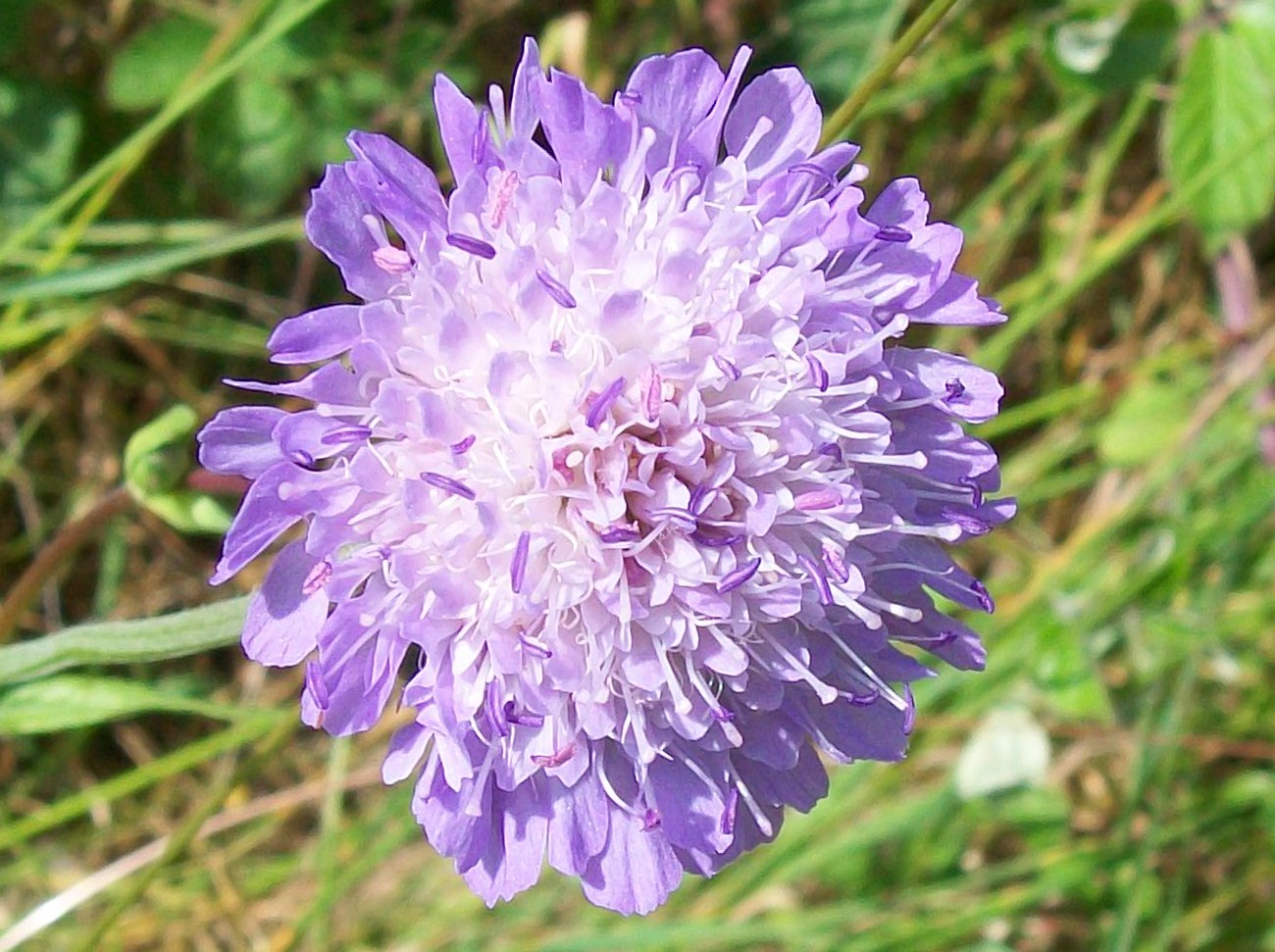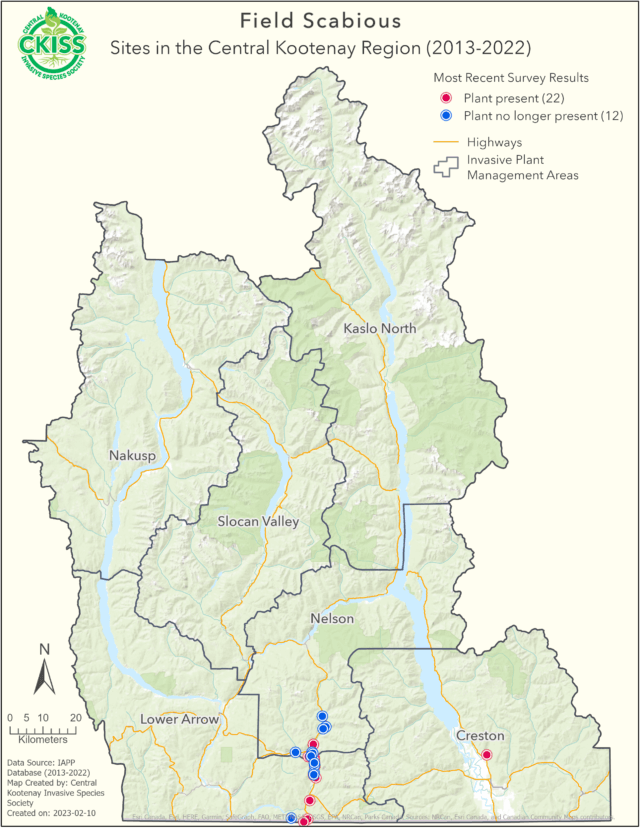Knautia arvensis
Description
- Field scabious is a perennial, taproot-forming plant found in grassy ecosystems.
- Each plant has one or more unbranched stems, growing up to 1.5 m tall.
- Flowers are clustered in composite heads appearing as a single flower at the end of the stems.
- The few leaves are hairy with varied shapes ranging from elliptical to toothed.
Introduction and spread
- This plant was introduced to North America from Europe for ornamental use.
- The plant spreads by seeds, with each plant producing up to 2000 seeds in late summer.
- The seeds primarily drop to the ground surrounding the parent plant, but can also be dispersed by animal or human activity.
Consequences of invasion
- Field scabious can spread rapidly in open areas, which can impact hay production and rangeland.
- The spread of this plant also reduces the growth of native plants.
Status in the CKISS region
- Field scabious is currently classified as Eradicate on the CKISS Annual Priority List.
- Field scabious has been found with very limited distribution in the region, so eradication is feasible.
- It has been found in the Nelson, Creston, and Lower Arrow Invasive Plant Management Areas, but not in other parts of the region.
- Please report findings of this species immediately.
- CKISS is taking steps to monitor and manage field scabious where it is currently found in our region.
- To learn more about how CKISS classifies and manages invasive species, see our Invasive Species Priority Lists page.
Integrated pest management options
Prevention
- The most important management option is prevention – do not use this plant for ornamental purposes, be PlantWise and use Grow Me Instead to help you choose non-invasive alternatives for your garden.
- Maintaining rangeland with healthy cover species can prevent this plant from establishing.
Mechanical treatment
- Once established, mowing, disking or otherwise removing the flowers before seed production is effective although several years of treatment will be required.
- Due to the deep tap root, it is difficult to remove the entire plant. Tap roots left in the ground will re-sprout, so preventing the plant from going to seed is the easiest long term management option.
- Field scabious can cause skin irritation, so wear long sleeves and gloves when working with this plant.
- Dispose of flowers/seed heads securely: All landfills within the RDCK and RDKB accept invasive plant species for free. Ensure your material is bagged in clear plastic bags and notify the attendant that you have invasive plant species. Plants must be identifiable through the bag. For more information please see the RDCK Resource Recovery Bylaw.


